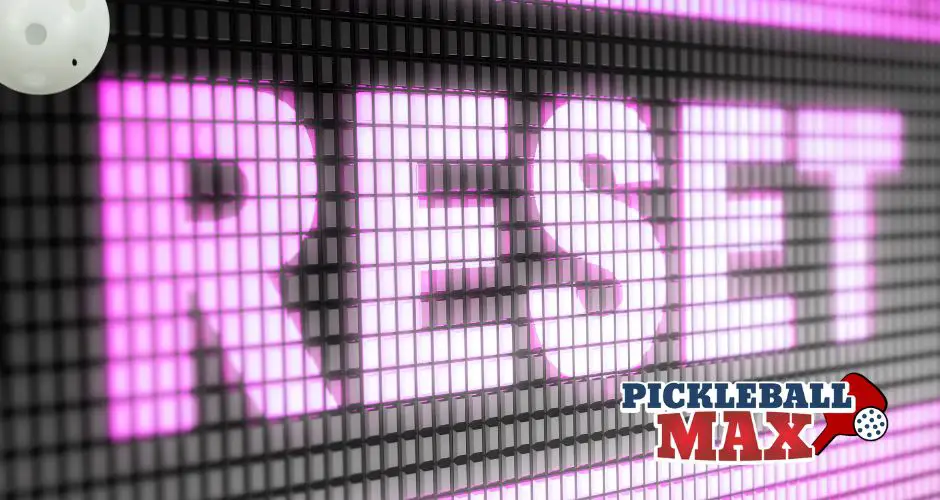
Reset. It’s, admittedly, one of the more difficult concepts to execute on the pickleball court – from both an execution standpoint and a mental mindset standpoint.
The reset requires, not only “soft” hands, but also a putting-aside-of-the-ego with the understanding that placement is frequently more important than power.
We do this by making sure we give our opponent balls that they cannot attack. Balls they cannot attack (without excessive risk) are those in which their paddle contacts the ball below the height of the net – those in which they are forced to hit “up” to clear the net.
This brings us to the pickleball reset.
What is a Reset in Pickleball?
A reset in pickleball is a soft, defensive shot that lands harmlessly into the opponent’s non-volley zone such that the opponent can no longer exert offensive pressure without significant risk (because they are hitting “up” on the ball) – most often attempted and executed by higher level players.
When Should I Reset?
Players should consider resetting the ball in the following situations:
- Your opponent’s hand-speed is quicker than yours and you’re engaged in a volley “firefight” at the net. If you keep exchanging volleys in a firefight and you keep losing the rally because your hands are slower than your opponents’, try something different. On the other hand, if your hand-speed is quicker than that of your opponent, counter-attack and engage in the volley exchange as it will favor you more times than not.
- You are attacked low. If you were to counter-attack a ball that is hit low to you (knees or below), your counter will be rising as it crosses the plane of the net (because you have to hit “up” to clear the net). This will leave for an easy downward-strike-of-the-ball for your opponent – one in which you’ll be very unlikely to return. A reset, although difficult to execute in this instance, will neutralize their advantage and will force them to hit “up” on the next ball.
- You are in the transition area of the court – the area between the baseline and the non-volley line – and your opponents are attacking from their non-volley line. Resetting the ball into the non-volley zone will give you time to make your way all the way to the non-volley line and it will force your opponent into an “upward” hit of their next shot – a win/win.
- You are pulled wide, but not wide enough to hit an around-the-post (ATP) shot. Resetting the ball into your opponent’s non-volley zone will give you time to recover and prepare for your next shot.
- You are not balanced and/or are outstretched. A reset will give you time to get yourself balance and prepared for the next shot.
How do I Reset?
Resetting the ball in pickleball is one of the more difficult skills to master. Here are a couple of tips, however, that will increase your chance for success:
- Make sure your knees are slightly bent if positioned at the non-volley line and that your butt is down and you have a wide base if attempting a reset from the transition area.
- Loosen your grip.
- Pull your paddle slightly into your body when absorbing the pace of the ball.
- Remember, less is more.
Final Thoughts about the Pickleball Reset
Being able to successfully reset the ball in a variety of situations is a skill that differentiates the great players from the good players. The tendency and temptation is to continue banging the ball back and forth. However, a well-placed reset shot will often give you a better opportunity for success.
What about you? Have you successfully taken advantage of the pickleball reset in your own game? Let us know in the comments below.
See you on the courts!
creditSource link






